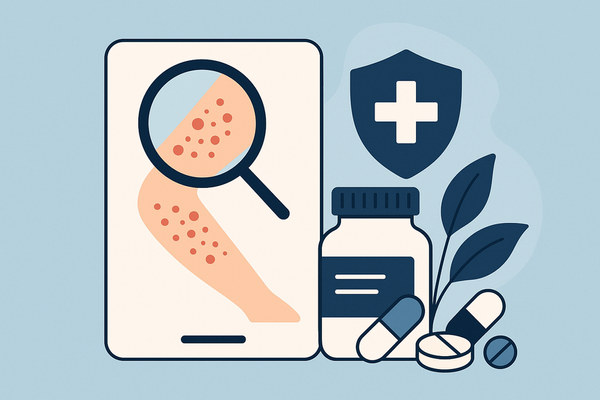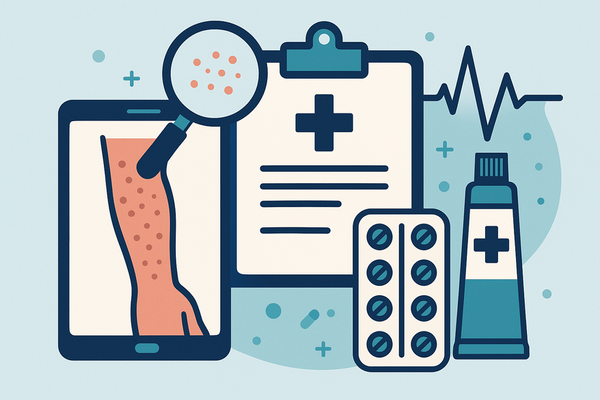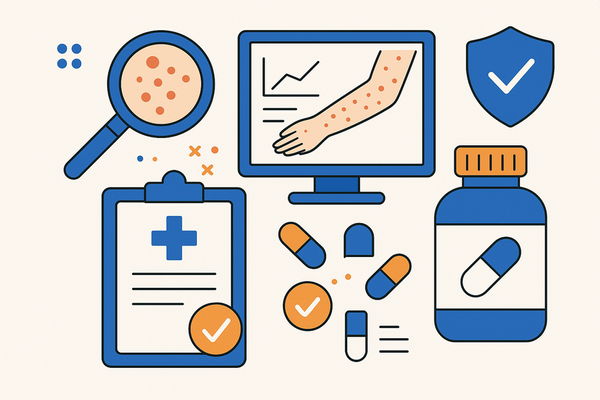How to Prevent Heat Rash with Simple Everyday Habits
Learn how to prevent heat rash with breathable fabrics, gym hygiene, and an effective shower routine. Keep your skin cool, dry, and irritation-free.
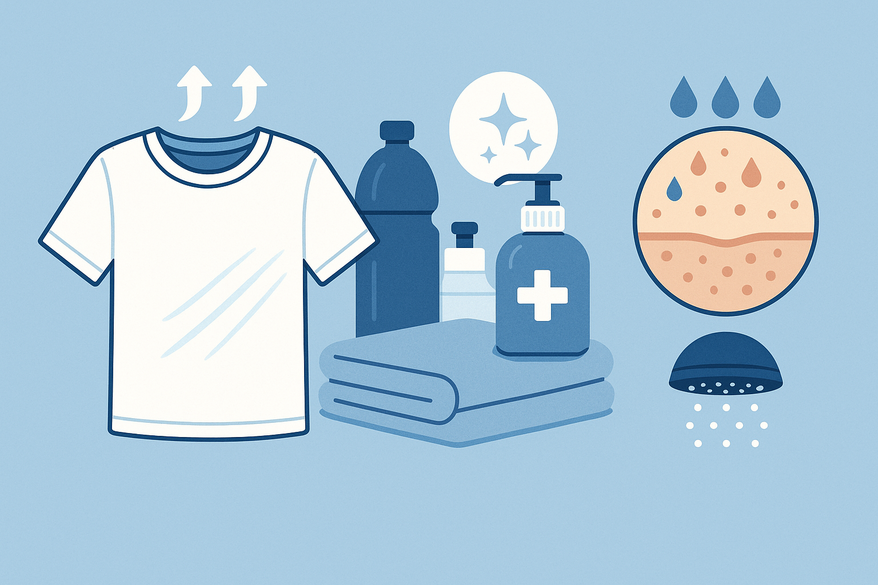
Estimated reading time: 8 minutes
Key Takeaways
- Heat rash forms when sweat ducts become blocked in hot, humid conditions.
- Loose, breathable clothing and moisture-wicking fabrics reduce irritation.
- Proper gym hygiene and quick post-workout showers help prevent infections.
- Anti-chafing gear and friction barriers protect sensitive areas like inner thighs.
- Gentle, lukewarm showers and prompt moisturizing support eczema-prone skin.
Table of Contents
- Understanding Heat Rash
- Choosing Breathable Fabrics for Sensitive Skin
- Gym Hygiene to Avoid Skin Infections
- Preventing Chafing in High-Risk Areas
- Shower Routine for Eczema-Prone Skin
- FAQ
Section 1: Understanding Heat Rash
Heat rash, also called miliaria or prickly heat, occurs when sweat ducts become blocked, trapping moisture against your skin and causing clusters of tiny, itchy bumps.
Risk Factors
- Hot, humid weather raises sweat levels.
- Intense exercise increases perspiration.
- Tight clothes or skin folds trap moisture.
Symptoms
- An itchy, prickly sensation on the skin.
- Clusters of fine bumps or blisters.
- Common spots: neck, chest, groin, under breasts.
Why These Prevention Steps Work
- Cooling breaks allow sweat ducts to clear.
- Airflow dries sweat and cools skin.
- Loose garments reduce friction and heat buildup.
- Fresh clothing prevents dampness that fuels irritation.
Key Prevention Tips
- Take frequent breaks from heat—seek shade or an AC-cooled area.
- Use fans to boost air circulation over sweaty skin.
- Opt for loose, breathable fabrics like cotton or bamboo.
- Change out of damp or sweaty clothes immediately after activity.
Sources:
Section 2: Choosing Breathable Fabrics for Sensitive Skin
Breathable fabrics are essential for sensitive skin prone to heat and friction. The right materials keep you cool and help wick moisture away.
Why Fabric Matters
- Airflow lets heat escape.
- Moisture-wicking fibers pull sweat away from the skin.
- Reduced friction decreases chafing and rash risk.
Best Fabric Choices
- Natural fibers like 100% cotton or bamboo: soft, hypoallergenic, and breathable.
- Technical synthetics such as moisture-wicking polyester blends made for sports.
Clothing Selection Tips
- Pick light colors to reflect sunlight.
- Choose loose cuts (t-shirts, wide-leg pants) to minimize skin contact.
- Avoid tight, dense materials like nylon or heavy knits that trap sweat.
Mini Comparison
Cotton vs. Nylon:
• Breathability: Cotton allows air to pass; nylon holds heat close.
• Moisture Wicking: Nylon dries faster but can cling; cotton absorbs sweat but stays damp longer.
• Comfort: Cotton feels soft next to skin; nylon may rub in folds when wet.
Sources:
Section 3: Gym Hygiene to Avoid Skin Infections
Maintaining proper gym hygiene is crucial if you exercise regularly. Gyms can harbor bacteria, fungi, and viruses that lead to skin issues.
Common Gym Pathogens
- Staph bacteria causing boils and folliculitis.
- Fungal spores leading to ringworm and athlete’s foot.
- Viruses responsible for warts or cold sores.
How Unclean Equipment Spreads Germs
- Leftover sweat on machines breeds bacteria.
- Shared mats and benches transfer fungi between users.
- Damp towels or clothes collect microbes.
Actionable Hygiene Routines
- Wipe down machines, mats, and benches with gym-approved disinfectant before and after use.
- Lay a personal towel or yoga mat between your skin and shared surfaces.
- Shower within 30 minutes after your workout to rinse away sweat and germs.
- Use a gentle, pH-balanced body wash to cleanse without stripping natural oils.
- Change into fresh clothes immediately after showering.
Gear to Carry
- Travel-sized disinfectant wipes.
- Quick-dry towel.
- Two sets of workout clothes: one to wear, one spare.
Source: American Academy of Dermatology
Section 4: Preventing Chafing in High-Risk Areas
Reduce chafing—especially on your inner thighs—by minimizing friction and moisture. For more on why chafing happens, see rash between the legs.
High-Risk Zones
- Inner thighs when legs press together.
- Underarms during arm swings.
- Bra line where the band meets the chest.
Preventative Measures
- Wear well-fitted, supportive undergarments like compression shorts or seamless underwear.
- Choose moisture-wicking shorts or anti-chafe bands to keep skin dry.
- Apply anti-chafing balms or petroleum-free lubricants before exercise.
- Use talc-free absorbent powders in problem spots to soak up moisture.
How These Tactics Help
- Snug—but not tight—gear holds fabric away from skin.
- Wicking materials draw sweat out to air.
- Balms and powders create a smooth barrier to reduce rubbing.
Source: Healthline
Section 5: Shower Routine for Eczema-Prone Skin
A calming shower routine can soothe eczema-prone skin. Eczema, or atopic dermatitis, leads to dry, itchy patches. Protect your skin barrier with these steps. Learn more in our guide.
Step-by-Step Routine
- Use lukewarm water (no higher than 98°F/37°C).
- Limit showers to 5–10 minutes.
- Cleanse with a gentle, fragrance-free formula containing ceramides or glycerin.
- Rinse thoroughly, paying attention to folds and creases.
- Pat your skin dry with a soft towel—avoid rubbing.
- Within three minutes, apply a thick, fragrance-free moisturizer or ointment.
- Run a cool-mist humidifier in your bedroom to keep air moist overnight.
Why This Works
- Lukewarm water helps prevent heat rash and respects skin oils.
- Short showers preserve natural oils that protect against dryness.
- Quick moisturizing and gentle cleansers rebuild the skin barrier.
Source: American Academy of Dermatology
Conclusion and Recap
By weaving these simple habits into your daily routine, you can keep your skin clear, cool, and comfortable:
- Heat rash prevention: stay cool, dry, and wear breathable fabrics.
- Fabric choices: opt for cotton or moisture-wicking blends.
- Gym hygiene: disinfect equipment, shower promptly, use clean towels.
- Anti-chafe measures: supportive, moisture-wicking gear and protective balms.
- Shower routine: lukewarm water, gentle cleansers, quick moisturizing.
These steps work together to reduce sweat buildup, friction, and germ exposure—leaving your skin calmer, less itchy, and more resilient.
For instant itch relief, explore OTC options.
For an AI-driven evaluation of your rash, try Rash Detector. Here’s a sample of the detailed report you’ll receive:
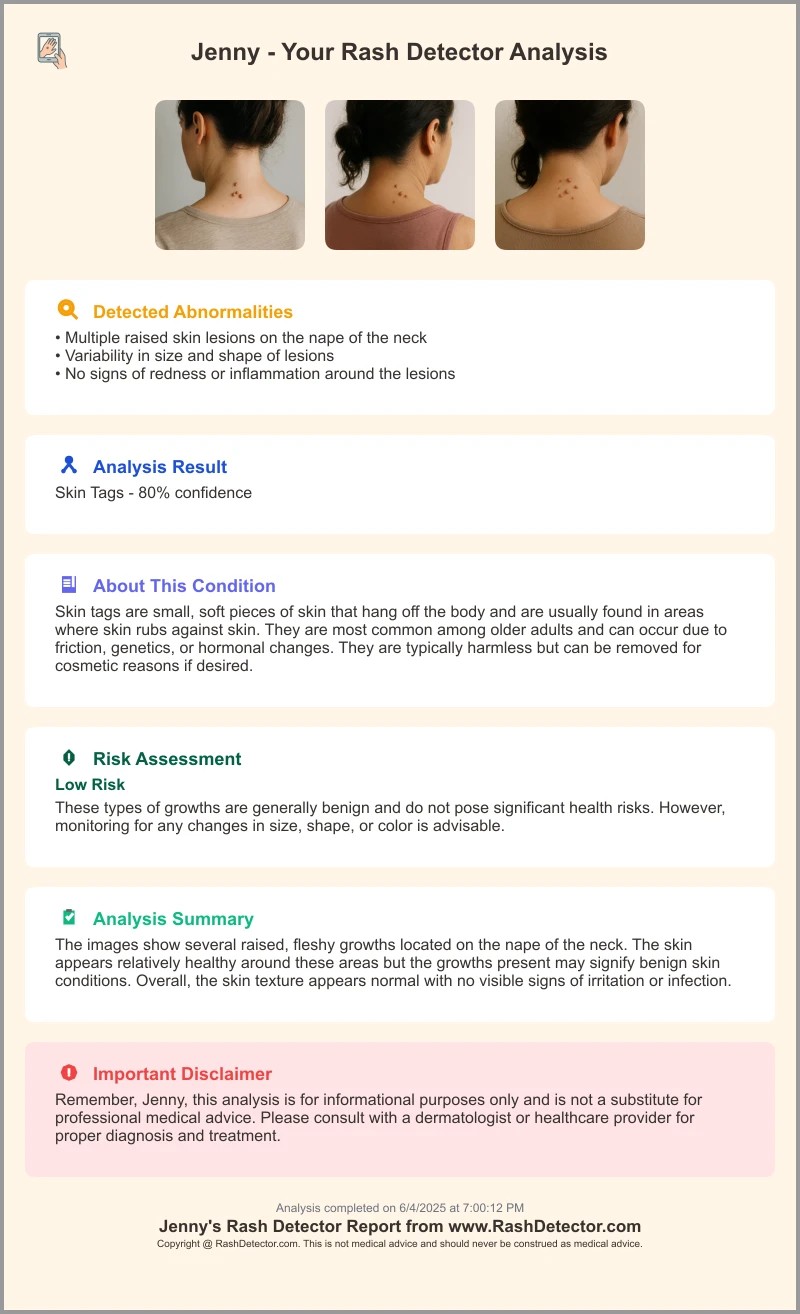
FAQ
What causes heat rash?
Heat rash is caused by blocked sweat ducts in hot, humid conditions that trap moisture under the skin, leading to irritation and tiny bumps.
How can I treat a mild heat rash at home?
Keep the area cool and dry, wear loose clothing, apply cool compresses, and use calamine lotion or hydrocortisone cream for relief.
Which fabrics are best for preventing heat rash?
Opt for natural fibers like 100% cotton or bamboo, or technical moisture-wicking blends that allow air circulation and draw sweat away.
Can working out trigger skin infections?
Yes—sweat and shared gym equipment can harbor bacteria and fungi. Always wipe down surfaces, use personal mats or towels, and shower promptly.
How often should I shower to minimize skin irritation?
Keep showers to 5–10 minutes with lukewarm water, use gentle cleansers, and moisturize within minutes to maintain your skin’s barrier.


